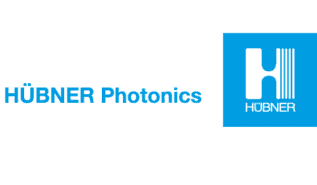
Laser light could turn a normally insulating material into a conductor and vice-versa, according to calculations done by physicists in the US and UK. This feat relies on quantum control, the idea that a system’s output can be tailored at will by applying a suitable time-varying field at its input. In future, they say, their scheme could allow everyday materials to take on the properties of more exotic systems such as superconductors.
When at equilibrium, a system’s behavior is largely dictated by its inherent characteristics. The very different compositions of gold and iron, for example, confer quite different chemical, electrical and magnetic properties. But as pointed out by Gerard McCaul of Tulane University in New Orleans, those properties can be altered by applying time-varying fields to the substances – typically an electromagnetic field like a laser. “There is a sort of ‘universality’ to driven systems,” he says, “where they can exhibit almost any observable behaviour you choose, provided you can find the appropriate driving field”.
In the latest work, McCaul and Tulane’s Denys Bondar, along with colleagues at King’s College London and the US Army Research Laboratory in Maryland, have devised a new theoretical framework for controlling a system’s properties using laser beams whose electromagnetic fields vary with time in a very well-defined way. This coherent control is already exploited in many applications, such as the use of radio-frequency pulses to prepare the states of quantum bits used in nuclear magnetic resonance experiments.
Hydrogen mimics argon
Three years ago, Herschel Rabitz, Bondar and colleagues at Princeton University showed theoretically that quantum control could be used to render the output of two distinct physical systems identical – so that one in effect mimics the other. The systems in question were atoms of argon and hydrogen, with the Princeton researchers calculating how a suitably shaped laser pulse fired at the hydrogen atom would force that atom to emit light with the same spectrum as argon.
Now, McCaul and colleagues have extended this idea to many-body systems, and in particular to solid-state materials. To do so they use the one-dimensional Fermi-Hubbard model, a stripped-down representation of a solid consisting of a lattice of interacting electrons. The model can predict a wide variety of material properties, including whether or not a system is a conductor, simply by comparing electrons’ kinetic and potential energies.
When exposed to a laser, a material absorbs energy from the beam, setting its electrons in motion. Conversely, electron motion can generate light. But the types of current and emission spectra generated in this way depend on whether the material is in a conducting or insulating phase. The Anglo-American group has shown that it is possible to vary the incoming fields in such a way to convert a conductor’s emission spectrum to that of an insulator, and vice-versa. As such, they predict, it should be possible to flip a solid between its insulating and conducting phases by careful design of the driving laser field.
Very non-linear relationship
Being able to shape a system’s properties in this way relies on a very non-linear relationship between the material’s output and the laser field at the input. That makes controlling the input far from straightforward. To do that, the researchers have adapted a technique known as tracking control to handle complex, everyday matter modeled with a lattice. Rather than calculating the optimal value for the laser field at each point in time, they instead use a non-linear equation of motion that continuously recalculates the field using the system’s output – something they found that they can do efficiently while avoiding non-physical singularities.
McCaul points out that this laser-based scheme is not able to dictate the value of every observable in a system. Changing the mass of a proton, for example, would be off limits. But nonetheless, he says, most material properties studied experimentally are electromagnetic in nature, and can therefore be influenced.
“If it quacks like a duck”
He also argues that the difference between a system’s appearance and behavior is a semantic issue. “We can only define states of matter by the behaviour we observe,” he says, “so if we can mimic that, our system is by definition in that state of matter. If it quacks like a duck…”

Quantum control of chemical reactions achieved with electrons
One potential application of the work, says McCaul, is “high harmonic generation” – producing light with a frequency several times that of the field driving the system. One way of probing very small or short-lived systems, it suffers from the fact that the harmonics are orders of magnitude less intense than the driving radiation. But the new scheme shows how it might be possible to boost the intensity of one of the harmonics produced, given that the spectrum is a parameter of the tracking model. Although the actual enhancement would depend on the type of laser and other hardware available, McCaul believes the new approach is “nevertheless a promising avenue” to generate high harmonics.
Looking further ahead, the researchers are also aiming to show how their scheme might create new types of superconductor or else raise the transition temperature of materials that already superconduct. George Booth of King’s College London, who also worked on the research, points out that superconductivity is not entirely defined by a system’s optical properties. Still, he says, it should be possible to design laser pulses that enable one system to mimic the superconducting properties of another.
The research is described in two papers, one in Physical Review Letters and the other in Physical Review A.
Physics World’s Laser at 60 coverage is supported by HÜBNER Photonics, a leading supplier of high performance laser products which meet the ever increasing opportunities for lasers in science and industry. Visit hubner-photonics.com to find out more.



